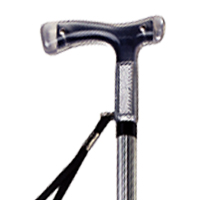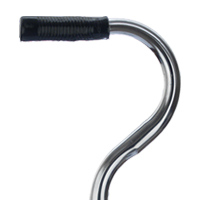AARP Hearing Center


If choosing between a cane or a walker isn't a choice you ever dreamt of making, know that one roughly 1 in 4 adults over 65 uses one of these mobility devices, and significantly more older adults use them today than 15 years ago.
Also know this: “Not all canes or walkers are created equal,” says Lindsey Yourman, an internist and geriatrician in La Jolla, California, affiliated with the University of California San Diego Health Jacobs Medical Center, who adds that choosing the wrong device can be a detriment to your mobility.
Pick-up walkers, for instance, which take a lot of energy to use, aren't necessarily a good choice for someone with congestive heart failure or chronic obstructive pulmonary disease who gets winded easily. Such walkers can actually lead to a decrease in activity, Yourman says, if someone finds them too hard to use. A walker with wheels, on the other hand, requires a certain level of balance to use safely. “And with a cane, you want to be sure it's the right height,” she says.
Here's what else to consider in such a device — starting with the all-important initial assessment by a physical therapist or other health care pro.
What's in an assessment
Yes, someone can decide that they need a mobility aid, then go a pharmacy or medical supply store and buy a cane or walker right off the shelf. “But the more serious the mobility problems, the more likely input from a rehabilitation doctor or physical therapist would be helpful,” says geriatrician Helen Hoenig, chief of physical medicine and rehabilitation at the Durham Veterans Affairs Health Care System.
Indeed, research has shown that 70 percent of canes are used incorrectly or are the wrong height or design for the user. The wrong choice can affect stability and increase the risk of falls. “If someone has a device set at the wrong height — say, it's too high — that can put strain through their neck, shoulders and through their arms,” says Diana Palm, a Fargo, North Dakota, physical therapist. “If it's too low, it can cause them to stoop forward, which can lead to impaired posture and back pain.”
A physical therapist can do a gait assessment, make sure that your device fits you correctly, and also train you on how to use it. “It's not always obvious,” says Hoenig. “For example, if you've got a painful knee or hip, some people think you should use a cane on the side that hurts. But you should use it with the hand opposite to the painful joint.” That way, it shifts weight onto the cane and away from your weaker side to keep you steady.
For expert tips to help feel your best, get AARP’s monthly Health newsletter.




































































More on Health
Mobility Problems: What to Do When Your Loved Ones Have Trouble Walking Around
The strength, balance needed to prevent falls are important for staying independent
5 Ways to Make Your Car More Accessible
Accessories to ease transporting mobility-challenged loved ones can cost as little as $10 or $20
Striking a Balance to Avoid Dangerous Falls
It's a hidden epidemic, but there's a lot you can do to avoid a severe injury